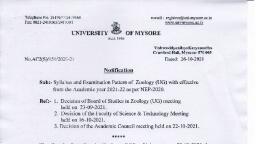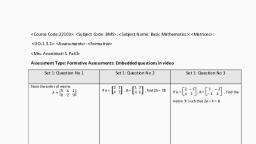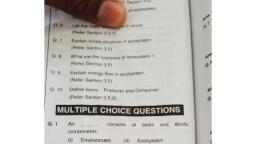Page 1 :
Unit-2 MCQ, Summative: Q 1, , Summative: Q 2, , Summative: Q 3, , Summative: Q 4, , Summative: Q 5, , Resources that can be, replenished naturally in, the course of time are, called ________, , Solar energy is, _________ form of, energy, , Productive functions of, forest includesavability, of ____, , nuclear fission, nuclear, decay and nuclear, fusion are________, , Minerals such as, Gasoline, Copper, and, Zinc production are, estimated to decline in, the next _____years., , Recall/ Remembering, , Understanding, , Application, , Understanding, , Application, , a)cyclic resources, , a)conventional, , a)timber, , a)general processes, , a)5, , b)Renewable, Resources., , b)nonconventional, , b)bamboo, , b)special processes, , b)10, , c)non-renewable, Resources., , c)both a and b, , c)medicines, , c)nuclear processes, , c)15, , d)none, , d)none, , d)all the above, , d)none, , d)20, , Ans: <b >, , Ans: <b >, , Ans: <d >, , Ans: <c >, , Ans: <d >, , Summative: Q 6, , Summative: Q 7, , Summative: Q 8, , Summative: Q 9, , Summative: Q 10, , About _____% of the, earth’s water is strong, saline., , Private companies, misuse __________ for, getting more profit., , In 2018 the total world, energy came from, ___% fossil fuels, , Deregulation and, privatization of energy, sector is a, _____strategyfor, sustainability., , Dams are constructed, across the river is used, for generating ____, , Recall/ Remembering, , Understanding, , Application, , Understanding, , Application, , a)50, , a)Natural resources, , a)64, , a)Medium-term, strategy, , a)Thermal power, , b)25, , b)money, , b)60, , b)Long – term strategy, , b) wind power, , c)97, , c)manpower, , c)74, , c)Immediate term, strategy, , c)tidal power, , d)100, , d)none, , d)70, , d) none, , d)Hydro electricity, , Ans: <c>, , Ans: <a >, , Ans: <a >, , Ans: <b >, , Ans: <d >
Page 2 :
Summative: Q 1, , Summative: Q 2, , Summative: Q 3, , Summative: Q 4, , Summative: Q 5, , Which one among the, following covers the, highest percentage of, forest area in the, world?, , Plants get their, nitrogen from–, , Pollination by wind is, , Forest is responsible for, , --- is the perpetual, source of energy., , Recall/ Remembering, , Understanding, , Application, , Understanding, , Application, , a)Temperate, Coniferous forests, , a)rain, , a)Autogamy, , a)water shedprotection, , a)nuclear reactor, , b)Temperate Deciduous, forest, , b)the soil, , b)Entomophily, , b)land erosion control, , b)hydropower, , c)Tropical Monsoon, forests, , c)the air, , c)Anemophily, , c)providing economic, and environmental, benefits, , c)solar energy, , d)Tropical Rain forests, , d)the bed rock, , d) Ornithophily, , d)All of the above, , d)None of the above, , Ans: <a>, , Ans: <b>, , Ans: <c>, , Ans: <d>, , Ans: <c>, , Summative: Q 6, , Summative: Q 7, , Summative: Q 8, , Summative: Q 9, , Summative: Q 10, , which of the following, is not renewable, resources?, , The main causes of, deforestation is, , water logging and soil, salinity are the, outcomes of..., , Wind energy is, harnessed as---------------- energy with the help, of windmill ., , Any material that can, be transform into more, valuable and useful, product for all service, is called as, , Recall/ Remembering, , Understanding, , Application, , Understanding, , Application, , a)coal, , a)overgrazing, , a)over- irrigation, , a)mechanical, , a)resource, , b)wind power, , b)mining, , b)solar, , b)minerals, , c)Geo thermal energy, , b)Agriculture industry, and other evelopmental, project, c)Timber extraction, , c)soil erosion, , c)electrical, , c)product, , d)thermal energy, , d)all of the above, , acid rain, , d)heat, , Ans: <a>, , Ans: <d>, , Ans: <a>, , Ans: <a>, , called–, , b), , None of the, above, , Ans: <a>
Page 3 :
Summative: Q 11, , Summative: Q 1 2, , Summative: Q 13, , Summative: Q 14, , Summative: Q 15, , Burning of fossil fuels, , All forms of water that, comes down on Earth,, including rain, show,, hail, etc. is, known as-----------------Understanding, , when the water is, ejected from earth’s, interior in the form of, hot water it is called, , Green revolution is, associated with --------------, , Pollination by wind is, called–, , Application, , Recall/ Remembering, , Application, , a)precipitation, , a)Geyser, , a)sericulture, , a)Autogamy, , b)Calcification, , b)hot springs, , b)agriculture, , b)Entomophily, , c)Fixation, , c)both( a) and (b), , c)fish culture, , c)Anemophily, , d)None of the above, , d), , d)None of the above, , d)Ornithophily, , ethane, Ans: <b>, , Ans: <a>, , Ans: <b>, , Ans: <b>, , Ans: <c>, , Summative: Q 16, , Summative: Q 17, , Summative: Q 18, , Summative: Q 19, , Summative: Q 20, , Which gas is likely to be, reduced in the, atmosphere by, deforestation?, , Which of the following, enhances soil fertility ?, , Forest is an example of, , The resources that can, be replaced by natural, ecological cycle is called, , Area X represents, , Recall/ Remembering, , Recall/ Remembering, , Understanding, , Understanding, , Application, , a) Carbon dioxide, , a) Improved methods of, agriculture, , a) Marine ecosystem, , a) renewable, , a)coal, , b) Nitrogen, , b) crop rotation, , b)Limnic ecosystem, , b) non renewable, , b)solar, , c)oxygen, , c) Using new seed, verities, , c) Artificial Ecosystem, , c) exhaustible, , c)nuclear, , d)All of the above, , d) Irrigation, , d)Terrestial Ecosystem, , d)natural, , d) oil, , Ans: <c>, , Ans: <b>, , Ans: <d>, , Ans: <a>, , Ans: <a>, , Recall/ Remembering, a)decreases, house gases, , green, , b)increases green, house gases, c)increase level of, oxygen, , d)increase level of, , None of the above
Page 4 :
Summative: Q 21, , Summative: Q 22, , Summative: Q 23, , Summative: Q 24, , Summative: Q 25, , The primary producers, in a forest ecosystem, are:, , The amount of oil that, may become available, foruse is called oil, ________., , A coal deposit that is, not economical to mine, today would be, considered part of our, __________, , Area W represents, , What is the leading, source of energy used, in the UnitedStates, today?, , Recall/ Remembering, , Understanding, , Recall/ Remembering, , Application, , Recall/ Remembering, , a)Chlorophyll, a., containing trees and, plants, b)Herbivores, , a)reserves, , a)coal reserves, , a)coal, , a)coal, , b)reservoir, , b)coal resources, , b)solar, , b)oil resources, , c)Carnivores, , c)resources, , c)coal reservoir, , c)nuclear, , c)natural gas, , d)Bacteria and other, micro-organism, , d)trap, , d)None of the above, , d) oil, , d)nuclear power, , Ans: <a>, , Ans: <c>, , Ans: <b>, , Ans: <d>, , Ans: <b>, , Summative: Q 26, , Summative: Q 27, , Summative: Q 28, , Summative: Q 29, , Summative: Q 30, , Energy resources, derived from natural, organic materials are, called ________., , All oil traps contain, ___________., , Area Y represents, , The world has the least, amount of which of the, following fuel types., , Area Z represents, , Recall/ Remembering, , Understanding, , Application, , Understanding, , Application, , a) geothermal energy, sources, , a)an impermeable layer, , a)coal, , a)oil, , a)coal, , b) fossil fuels, , b)an anticline, , b)solar, , b)coal, , b)solar, , c)biomass, , c)a fault, , c)nuclear, , c)urenium, , c)nuclear, , d)All of the above, , d) All of the above, , d) oil, , d) oil, , Ans: <b>, , Ans: <a>, , Ans: <c>, , d)there are roughly, equal amounts of each, of these fuels, Ans: <a>, , Ans: <b>
Page 5 :
Summative: Q 31, , Summative: Q 32, , Summative: Q 33, , Summative: Q 34, , Summative: Q 35, , Burning of which of the, following fuels, produces the least, amount of carbon, dioxide per unit of, energy?, , Nuclear energy is, derived by, ___________., , Solar energy stored in, material such as wood,, grain, sugar, and, municipal waste is, called __________., , Which of the following, energy sources does, not produce carbon, dioxide?, , The most nuclear fuel, used in the world, is________________, , Recall/ Remembering, , Understanding, , Application, , Understanding, , Application, , a)coal, , a)combustion of atoms, of U 235, , a)fossil fuels, , a)oil, , a)Thorium – 232, , b)oil, , b)fission of atoms of U, 235, , b)biomass, , b)uranium, , b)Uranium – 238, , c)natural gas, , c)fusion of atoms of U, 235, , c)geothermal energy, , c)coal, , c)Uranium – 235, , d)all of these produce, the same amount of, carbon dioxide., , d)the breaking of U 235, bonds, , d)natural gas, , d)natural gas, , d) Plutonium – 239, , Ans: <c>, , Ans: <b>, , Ans: <b>, , Ans: <b>, , Summative: Q 36, , Summative: Q 37, , Summative: Q 38, , Summative: Q 39, , Summative: Q 40, , What type of energy is, derived from heated, groundwater?, , The world faces an, energy crisis because, _________, , Fossil fuels are rich in, carbon and, , Wind is beneficial, resource of energy as it, doesn't cause, , Earth emits heat by, eruptions of, , Recall/ Remembering, , Understanding, , Application, , Understanding, , Application, , a)solar, , a)world demand for, energy will increase, , a)nitrogen, , b)geothermal, , b)world oil production, will peak and begin to, decline, c)hortages and the, resulting escalation of, prices can shock the, economic and political, order, , b)hydrogen, , b)echo, , b)hot springs, , c)oxygen, , c)noise, , c)geysers, , d)nuclear, , d)All of the above, , d)nitrite, , d)sound, , d) All of the above, , Ans: <b >, , Ans: <d>, , Ans: <b>, , Ans: <a>, , c)hydro electrical, , b., , d., , a)pollution, , c., , e., , f., , Ans: <c>, , a)volcano, , Ans: <d>
Page 6 :
Summative: Q 41, , Summative: Q 42, , Summative: Q 43, , Summative: Q 44, , Summative: Q 45, , Fossils fuel is an, important source of, energy for, , Energy is released from, fossil fuels when they, are_________________, __, , Black painted panels, which are hanged at, roofs to trap heat and, energy from sun, are, , As per energy outlook, 2019 world energy, consumption will grow, by nearly ____ between, 2018 to 2050., , What are necessary, conditions for socioeconomic change for, sustainable world, , Recall/ Remembering, , Understanding, , Application, , Understanding, , Application, , a)transport, , a)pumped, , a)solar cell, , b)homes, , b)cooled, , b)solar heater, , b)60 %, , b)economic viability, , c)industries, , c)burnt, , c)solar furnace, , c)70 %, , c)harmony with, environment, , d)all of them, , d)Pressurized, , d)solar battery, , d)80 %, , d) All of the above, , Ans: <d >, , Ans: <c>, , Ans: <b>, , Ans: <a>, , Summative: Q 46, , Summative: Q 47, , Summative: Q 48, , Summative: Q 49, , Summative: Q 50, , In the production of, wave energy which, form of energy is used?, , A tidal barrage is a, barrier built over, a_______, , The blades in wind, turbines are connected, to________________, , In hydroelectricity, power__, , In order to produce, solar energy during, sunlight, where the, energy is stored in the, batteries?, , Recall/ Remembering, , Understanding, , Application, , Understanding, , Application, , a)potential, , a)River bed, , a)Nacelle, , a)Kinetic energy is, transferred to potential, , a)Nickel Sulfur, , b)kinetic, , b)River estuary, , b)Tower, , b)Potential energy is, transferred to kinetic, , b)Zinc Cadmium, , c)solar, , c)Rver end, , c)foundation, , c)Nickel Cadmium, , d)wind, , d)River starting, , d)string, , Ans: <b>, , Ans: <b>, , Ans: <a>, , c)Solar energy is, transferred to wind, energy, d)Wind energy is, transferred to solar, energy, Ans: <b>, , g., , a)50 %, , h., , i., , a)satisfaction of basic, needs, , Ans: <d>, , d) Nickel Zinc, , j., , Ans: <c>
Page 7 :
Summative: Q 51, , Summative: Q 52, , Summative: Q 53, , Summative: Q 54, , Summative: Q 55, , Energy in the form of, heat and light is, obtained by_____, , Trapped heat inside the, earth is known as___, , SI unit for energy is___, , Common energy source, in Indian villages is:, , Which among the, following is not an, adverse environmental, impact of tidal power, generation?, , Recall/ Remembering, , Understanding, , Application, , Understanding, , Application, , a)Biomass, , a)Heat energy, , a)joule, , a)Electricity, , a)Interference with, spawing and migration, of fish, , b)fossil fuel, , b)geo thermal energy, , b)watt, , b)coal, , c)sun, , c)kinetic energy, , c)kilogram, , c)sun, , b)Pollution and health, hazard in the estuary, due to blockage of flow, of polluted water into, the sea, c)Navigational hazard, , d)wind, , d)thermal energy, , d)Newton, , d)Wood and animal, dung, , Ans: <c>, , Ans: <b>, , Ans: <a>, , Ans: <d>, , Summative: Q 56, , Summative: Q 57, , Summative: Q 58, , Summative: Q 59, , Summative: Q 60, , Photovoltaic cell, converts solar energy, into, , Biomass can be, converted to, , In which of the, following region winds, are stronger and, constant, , Which of the following, is a disadvantage of, renewable energy?, , The difference, in, temperature between, the core of the planet, and its surface, is, known as, , Recall/ Remembering, , Understanding, , Application, , Understanding, , Application, , a)heat energy, , a) methane gas, , a) deserts, , a) High pollution, , a) geothermal, coefficient, , b)mechanical energy, , b) ethanol, , b) offshore, , b) Available only in few, places, , b) geothermal gradient, , c)electrical energy, , c) biodiesel, , c) low altitudes site, , c) High running cost, , c) eothermal constant, , d)chemical energy, , d)All of the above, , d)All of the above, , d) Unreliable supply, , d) None of the above, , Ans: <c >, , Ans: <d>, , Ans: <b>, , Ans: <d>, , d) None of the above, k., , l., , Ans: <d>, , Ans: <b>
Page 8 :
Summative: Q 61, , Summative: Q 62, , Summative: Q 63, , Summative: Q 64, , Summative: Q 65, , A Solar cell is an, electrical device that, converts the energy of, light directly into, electricity by the ___, , The main composition, of biogas is ___, , In hydroelectric power,, what is necessary for, the production of, power throughout the, year?, , Which among the, following have a large, amount of installed grid, interactive renewable, power capacity in, India?, , Recall/ Remembering, , Understanding, , Application, , a) Photovoltaic effect, , a) methane gas, , a) Dams filled with, water, , Which Ministry is, mainly responsible for, research and, development in, renewable energy, sources such as wind, power,, small hydro,, Understanding, biogas and solar, power?, a) Human Resource, Development, , b) Chemical effect, , b) Carbon dioxide, , b) High amount of air, , b) Agriculture and, Farmers Welfare, , b) Solar power, , c) Atmospheric effect, , c) nitrogen, , c) High intense sunlight, , c) Ministry of New and, Renewable Energy, , c) Biomass power, , d)Physical effect, , d)hydrigen, , d) Nuclear power, , d) Health and Family, Welfare, , d) Small Hydro power, , Ans: <a >, , Ans: <a>, , Ans: <a>, , Ans: <c>, , Summative: Q 66, , Summative: Q 67, , Summative: Q 68, , Summative: Q 69, , Summative: Q 70, , The most, abundantly, available fossil, fuel in India is __, , Hydroelectric, power produces, electricity, using....., , Which of the following, is not under the, Ministry of New and, Renewable Energy?, , How many forms of, fossil fuels are, there____, , The most efficient, energy conversion, occurs in, , Recall/ Remembering, , Understanding, , Application, , Understanding, , Application, , a) coal, , a) wind, , a) Wind energy, , a) one, , a) tidal power stations, , b) Natural gas, , b) solar, , b) Solar energy, , b) two, , b) diesel engines, , c) petrolium, , c) moving water, , c) Tidal energy, , c) three, , c) solar panels, , d)oil, , d)dung, , d) Large hydro, , d) four, , d) hydro-electric power, stations, , Ans: <a >, , Ans: <c>, , Ans: <d>, , Ans: <c>, , Application, a) Wind power, , m. Ans: <a>, , n., , Ans: <d>















































